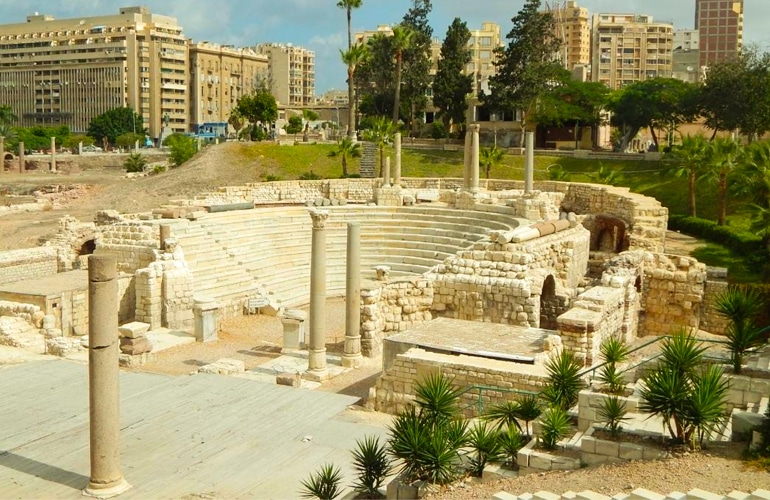The roman theatre of alexandria
If you are interested in history, you might want to check out the Roman Amphitheatre of Alexandria, which is also known as the Kom el Dikka Theatre. It is located in Alexandria, Egypt.
1.Below are the main highlights about this interesting structure:

So with these background details, I will equate the Kam el Dikka Theatre with what I have learnt about its discovery and origins: The amphitheatre was discovered by chance in 1960 when a building was about to be put up in the area of Kom el-Dikka. Spades hit the ground and not the man who was digging was looking for the grave of Alexander of Macedon, this is how as it turned out this Roman entertainment facility was also found. The theater was constructed in the 4th century and, with little interruption, was in constant use up to the 7th century, within Roman, Byzantine, and Islamic times.
2.Structure and Characteristics:

Roman theater, constructed in Alexandra, follows the common structure of Roman theatres: There are several sections of the Audience: The audience section is constructed using marble and it has 13 steps. This section could accommodate approximately six hundred enthusiasts. Supporting Columns: The columns were clad in granite that was brought from Aswan in southern Egypt.
3.Top of the Audience Section:

Very likely, these sections served or were meant for some sort of royalty or important member of the public during the performance. Limpid Limestone pizza Pain Special Pizzas Port – C450. Pizzerias also any member inside the audience can be disguised as a performer.
4.Scope and functions:

All these undertakings were held in the small dramas where the word "amphitheatre" implies a sport ground or a large sporting arena. Many activities, rituals and dramatical presentations took place. Spectators were entertained with plays, music and other shows.
5.Theory of Academic Institution:

6.After some time, new investigations and surveys have yielded captivating ideas:

Some of the historians basing on archaeological findings believe that that structure was not a civic plaza but rather a small lecture room. That whole construction could also be an academic institution, much like how some even envisage a reid college of sorts in relation of the enormous library of Alexandria.
 English
English





















